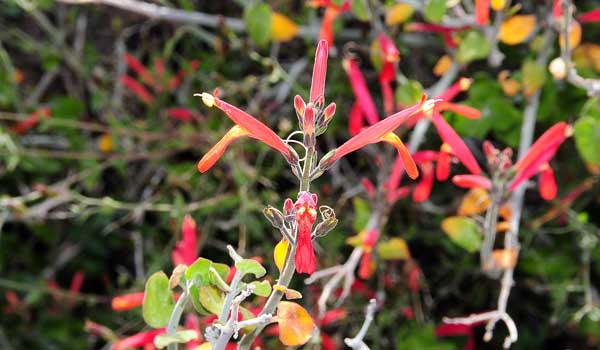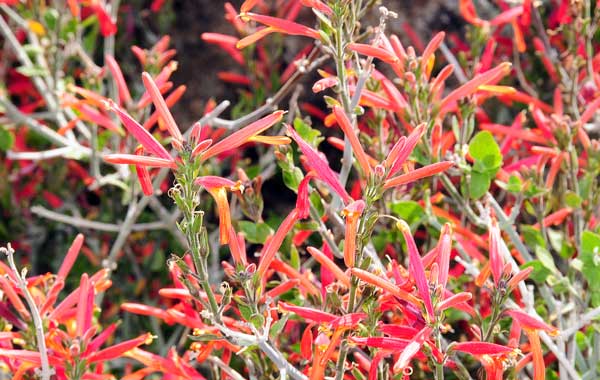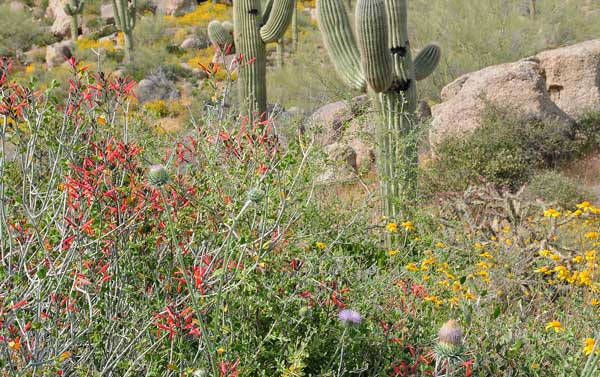Justicia californica, Chuparosa



Scientific Name: Justicia californica
Common Name: Chuparosa
Also Called: Beloperone, Hummingbird Bush (Spanish: Chuparosa)
Family: Acanthaceae, Acanthus Family
Synonyms: (Beloperone californica)
Status: Native
Duration: Perennial
Size: Up to 6 feet tall and almost twice as wide.
Growth Form: Shrub; rangy, open, twiggy, green succulent-like stems, stems brittle, herbage canescent puberulent, often growing in larger shrubs or trees for support and warmth.
Leaves: Green; opposite, simple, petioled, fine pubescence, deciduous (dry heat or cold) simple, ovate or cordate.
Flower Color: Red or dull red or reddish-orange; tubular funnel-form with two-lobed upper lip and three-lobed lower lip; 2 stamens, flowers on naked racemes and axillary, fruit is a capsule.
Flowering Season: Spring and throughout the year with ample water. In Texas Chuparosa blooms from May to early fall.
Elevation: 1,000 to 4,000 feet.
Habitat Preferences: Desert washes, rocky slopes especially at the base of large granite boulders.
Recorded Range: Justicia californica is rare in the United States found as a native only in Arizona and California. In Arizona it is found in the central- southwest-parts of the state and in California it is native in Riverside County and south to the border.
North America & US County Distribution Map for Justicia californica.
U.S. Weed Information: No data available.
Invasive/Noxious Weed Information: No data available.
Wetland Indicator: No data available.
Threatened/Endangered Information: No data available.
Genus Information: 28 species in Justicia in North America; in southern, eastern half and northeastern United States and in Canada in Ontario and Quebec. 4 species in Arizona.
Comments: Chuparosa is another member of the Acanthus family found in the Sonoran Desert in Arizona and California. Arizona may represent its northern most limits in North America. Chuparosa or Beloperone as it is also called is heavily used by hummingbirds as the name implies. It also makes an excellent landscape plant and is readily available in nurseries.
In Southwest Desert Plants also see: Thurber’s Desert Honeysuckle, Anisacanthus thurberi; Heath Wrightwort, Carlowrightia linearifolia; Arizona Foldwing, Dicliptera resupinata; and Spreading Snakeherb, Dyschoriste schiedeana var. decumbens.
Ethno-botanical uses have been identified for Chuparosa. See species account from Native American Ethnobotany, University of Michigan, Dearborn.

